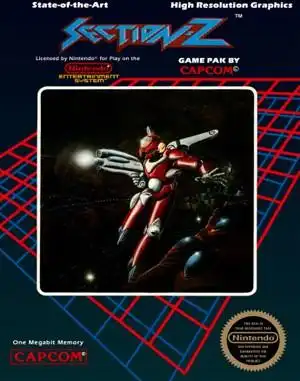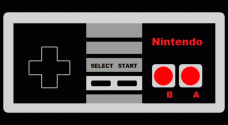Capcom released a lot of memorable games on the Nintendo Entertainment System. Titles like Mega Man, Bionic Commando, and DuckTales immediately spring to mind. But tucked away in that classic library is a game that often gets overlooked, a quirky, challenging beast known as Section Z NES. It wasn't a straightforward side-scroller or top-down shooter; it was something... different. And for many of us who tackled it back in the day, it left a lasting impression, for better or worse.
Let's blast off and revisit this unique entry in the NES canon.
What Is Section Z, Anyway? (Arcade vs. NES)
Before landing on the NES, Section Z started life as a 1985 arcade game. That version was a multi-directional shooter where you navigated 26 alphabetical sections across five stages, blasting aliens and collecting power-ups. It was a decent arcade cabinet, but it's the 1987 NES port that most retro gamers remember, and it was a vastly different beast.
The premise remained similar: you're an astronaut (later identified in the NES manual as "Captain Commando," a fun little piece of Capcom lore) infiltrating an alien space station belonging to the Balangool empire. Your mission? Destroy their generators and reach the final boss sections. But how you went about this mission changed dramatically from the arcade.
Navigating the Maze: Gameplay on the NES
The NES version of Section Z traded the arcade's linear progression for a sprawling, non-linear map. Instead of 26 sections, you had 60 numbered sections spread across three main "zones." The goal wasn't just to survive, but to explore using transporters (those little doorways) to find specific generators you needed to blow up to unlock paths forward. This gave the game a distinct adventure or exploration feel, almost like a simplified Metroid mixed with a shooter.
One of the most unique aspects was the control scheme. Unlike most shooters that used one button for firing and maybe another for jumping or a special weapon, Section Z on the NES used two fire buttons: one to shoot left, and one to shoot right. This took some getting used to but allowed for strategic covering of both directions simultaneously.
As you explored, you could find weapon upgrades for your default laser rifle, including the Flash Buster, Megasmasher, and the powerful Mega Buster. There was also a temporary Barrier Shield pickup for extra protection.
The game used an energy system. Taking hits or losing a life depleted your energy. While you could continue within a section as long as you had energy, running out meant game over. You could increase your maximum energy by destroying generators, adding another layer to the exploration goal. There were also special "transmission shells" you could use at an energy cost for powerful attacks.
The NES Challenge: Difficulty and That Missing Save Feature
Let's be honest: Section Z on the NES was tough. Beyond the tricky dual-button controls and the maze-like structure, the game had some punishing mechanics. While your energy bar protected you from projectiles, touching certain environmental hazards or enemies could result in instant death, sending you back to the start of the current section (or even the start of the area if your energy hit zero).
But the real kicker, the source of countless frustrated button-mashing sessions, was the lack of a save or password feature in the US NES release. The Japanese Famicom Disk System version did have save capabilities, which made tackling the game's large, complex map much more manageable. For NES players, beating Section Z meant completing the entire game in one sitting. Given the difficulty and the non-linear exploration required, this was a monumental task that likely kept many players from ever seeing the end.
A Unique Capcom Gem?
Despite its frustrations, Section Z stands out in the NES library. Its blend of multi-directional shooting and non-linear exploration was relatively uncommon for the time. It demanded more thought than a typical linear shooter, forcing players to map out routes (mentally or on paper!) and strategize which generators to target.
It even earned a spot on IGN's list of the top 100 NES games, ranking at number 90, praised for its unique structure and challenge. While some retro critics find it a flawed product of its era, others appreciate its ambition and distinct gameplay loop.
Reliving the Mission Today
If you're feeling nostalgic (or masochistic) and want to tackle the Balangool empire yourself, how can you play Section Z NES today?
- Original Hardware: Track down a physical cartridge and a working NES.
- Emulation: NES emulators are readily available for PC and other devices, allowing you to experience the game digitally. (Remember to source ROMs legally).
- Collections: The arcade version has appeared on collections like Capcom Classics Collection Vol. 1, but the NES version is less commonly compiled.
Be prepared for a challenge, especially if you're playing the US NES version without the FDS save feature!
Frequently Asked Questions
Is Section Z on the NES the same as the arcade game?
No, the NES version is significantly different. While the premise is similar, the NES game features a non-linear map with 60 sections, transporters, dual-button firing, and a focus on destroying generators, unlike the arcade's linear 26 sections and different controls.
Why is Section Z on NES considered difficult?
Its difficulty stems from instant death hazards, a punishing energy system, a maze-like non-linear map that requires exploration, and the lack of a save or password feature in the US release, forcing players to beat it in one sitting.
Does the NES version of Section Z have a save feature?
The original US NES cartridge does not have a save or password feature. However, the Japanese Famicom Disk System version did allow players to save their progress.
Who is the protagonist in Section Z?
The protagonist is an astronaut. The US NES manual identifies him as "Captain Commando," a character Capcom would later feature more prominently.
Conclusion
Section Z on the NES is a fascinating time capsule. It's a game that tried something different, blending shooting action with exploration in a way that wasn't standard for the time. It's undeniably frustrating due to its difficulty and the infamous lack of saving, but it's also a unique piece of Capcom's NES history. If you're a retro gamer looking for a deep dive into the more obscure, challenging corners of the 8-bit era, Section Z NES is waiting for you. Just don't say we didn't warn you about the difficulty!


